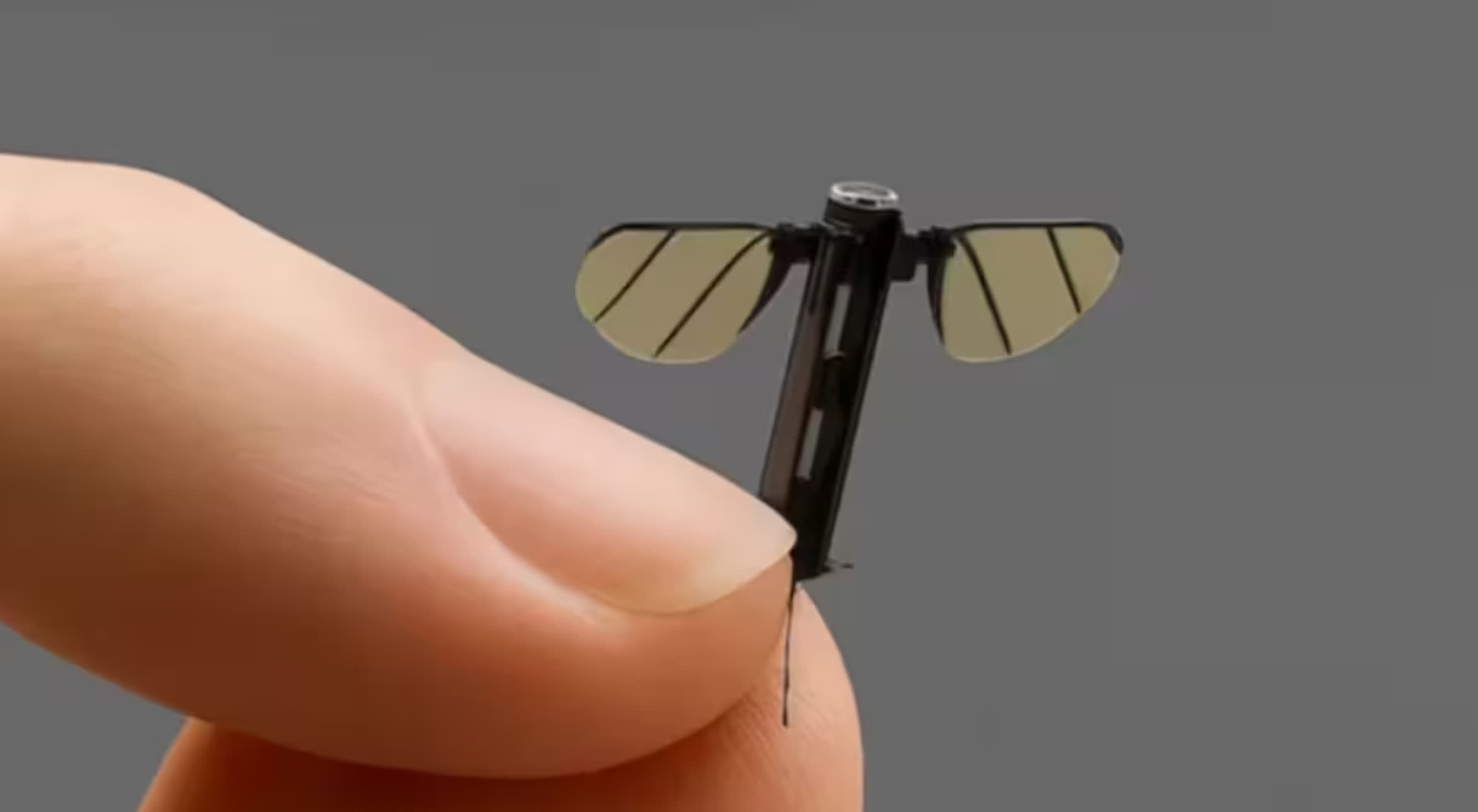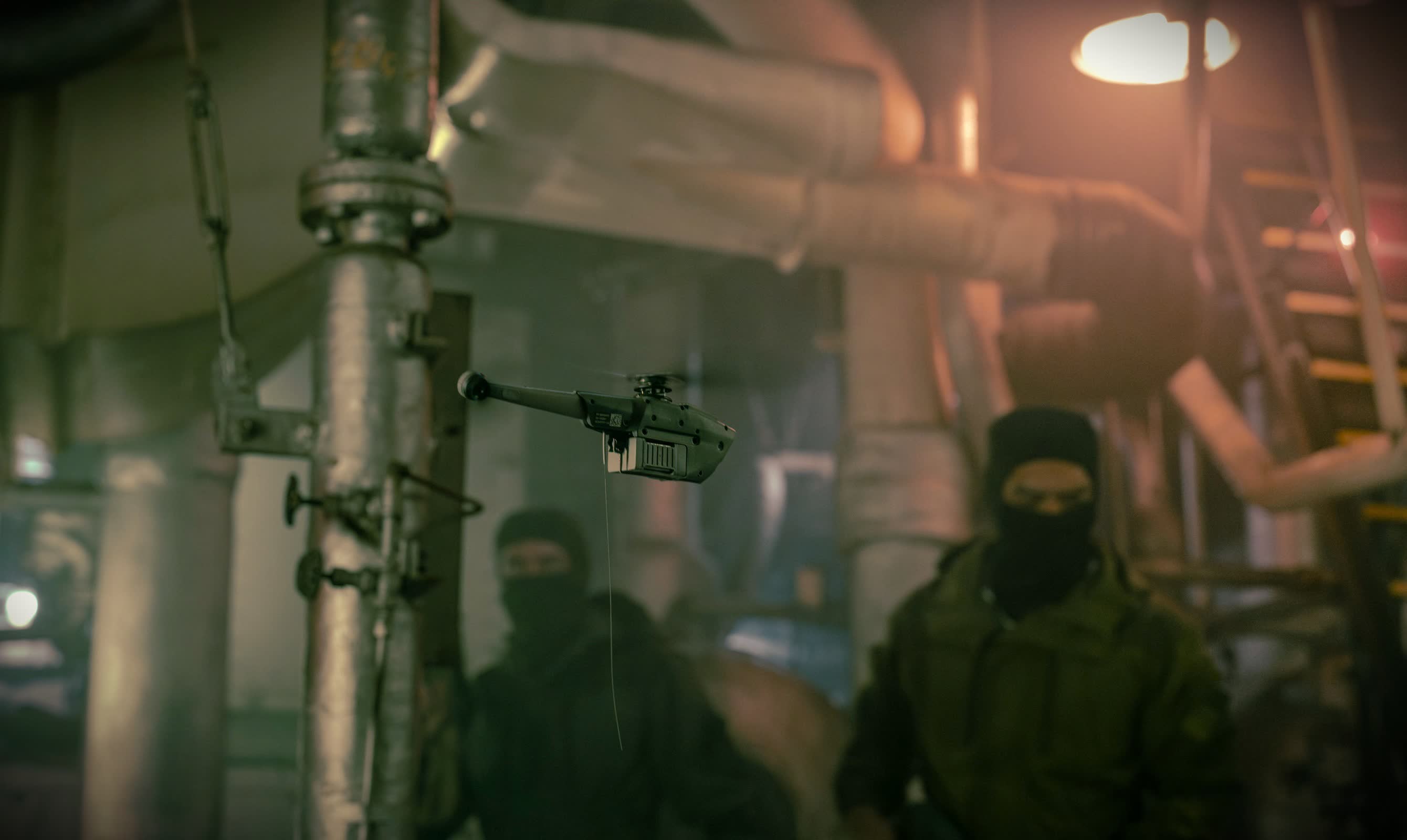In a nutshell: A new chapter in military robotics is unfolding in China, where researchers have unveiled a drone so small it can perch between two fingers. Developed by the National University of Defense Technology in Hunan province, this mosquito-sized unmanned aerial vehicle is built for covert reconnaissance missions.

The microdrone was showcased on state broadcaster CCTV 7, where NUDT student Liang Hexiang demonstrated its capabilities by holding it up for the camera. Barely larger than an actual mosquito, the device features a slender, stick-like body equipped with two delicate, leaf-shaped wings and three hair-thin legs. Its design closely mimics the anatomy and flight mechanics of insects, allowing it to discreetly navigate complex environments and land or perch on various surfaces.
The miniature UAV is engineered for stealth. Its tiny size makes it extremely difficult to detect – ideal for surveillance and intelligence-gathering missions in contested or sensitive areas. According to its developers, the drone is particularly suited for collecting information and supporting special operations on the battlefield where remaining unseen is often critical.

The Black Hornet 4 model.
Packing advanced technology into such a tiny frame poses a significant engineering challenge. Every essential component – sensors, power supply, communication modules, and control circuits – must be miniaturized without compromising performance.
The drone's wings flap to replicate insect flight, a bionic design that improves maneuverability while minimizing both acoustic and visual signatures. Its three ultra-thin legs allow for stable landings and perching, which can aid in prolonged observation or energy conservation.
This technical feat draws on breakthroughs in microelectromechanical systems, advanced materials science, and biomimetic engineering. Integrating sensors and processors at this scale demands precision manufacturing and close interdisciplinary collaboration. The result is a UAV that can be remotely operated – potentially even via smartphone, as seen in some prototypes – and transmit data to operators in real time.

The RoboBee.
Around the world, the race to develop microdrones is accelerating. Norway's Black Hornet series, for example, includes palm-sized reconnaissance drones already deployed by multiple militaries. The latest model, Black Hornet 4, features improved battery life, weather resistance, and encrypted communications, demonstrating ongoing efforts to overcome the technical hurdles of extreme miniaturization.
In the US, research teams like those at Harvard University have also produced insect-inspired drones including RoboBee, which can perform complex aerial maneuvers and even transition between flying and swimming.
Although microdrones are primarily developed for military use, their potential applications extend far beyond the battlefield. In disaster response, they could search for survivors in collapsed buildings or hazardous zones. For environmental monitoring, their small size allows data collection in hard-to-reach or sensitive ecosystems. In medicine, micro-robotics is already enabling minimally invasive tools for diagnosis and treatment.
Despite their promise, microdrones face key limitations. Their tiny frames restrict payload capacity, limiting the types of sensors or equipment they can carry. Power supply remains a persistent challenge, as batteries must be compact yet powerful enough to sustain flight and communication.
Still, the unveiling of China's mosquito-sized UAV represents a major leap forward, signaling a future where machines no larger than insects may play vital roles in both military and civilian missions.
In the microdrone arms race, China unveils a mosquito-sized UAV built for stealth